#silk blouse with ethnographic embroidery
Text
Layla Boustani: Majestic Gaze, A Lady's Ethnic Enigma
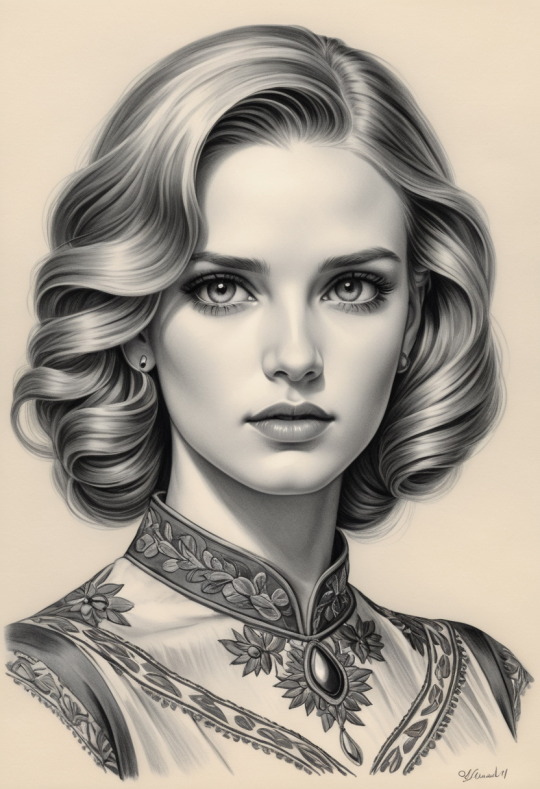
Stable Diffusion series
POSITIVE PROMPTS (Copy the following)
Charcoal and graphite artistically portray a Lebanese-style young woman, exuding vintage waves hairstyle, enveloped in a silk blouse adorned with ethnocultural embroidery, wielding a bold and direct stare, maintaining a head straight with a powerful stance, and intensely engaging another in this arresting head profile portrait shot. Meticulously shaded, unveiling intricate facial expressions, preserving a minimalistic yet expressive aura, centering on the eyes, embracing a monochromatic theme, and accentuating tender contours, all as a testament to her formidable character and emotions.
NEGATIVE PROMPTS (Copy the following)
full body shot, modern, light, vibrant, colorful, simplistic, minimalism, plain, simple, bokeh, blurry, blur, emotionless, boring, worst quality, low quality, normal quality, lowres, low details, oversaturated, undersaturated, overexposed, underexposed, grayscale, bw, bad photo, bad photography, bad art, watermark, signature, text font, username, error, logo, words, letters, digits, autograph, trademark, name, grainy, ugly, asymmetrical, poorly lit, bad shadow, draft, cropped, out of frame, cut off, censored, jpeg artifacts, out of focus, glitch, duplicate, nsfw, deformed, noisy, blurry, distorted, low contrast, dull, plain, modest, cleavage, asymmetrical eyes, signature, watermark, text, word, logo
(Note: Positive and negative prompts can instantly make you an AI drawing expert. Applicable to almost all AI drawing platforms and software that support input of positive and negative prompts. For example, all Stable Diffusion platforms, DreamStudio.ai, Craiyon.com, Leonardo.ai, etc.)
Midjourney v6 (Copy the following)
/imagine prompt: In this captivating charcoal and graphite portrait, a young Lebanese woman is depicted with a vintage waves hairstyle, beautifully attired in a silk blouse adorned with traditional embroidery. Her bold and direct stare conveys her strength and determination, as her head remains erect with a powerful posture, her gaze locked onto an unseen observer. The portrait skillfully showcases delicate shading and intricate facial expressions, effectively communicating her emotional depth. Adopting a minimalistic yet expressive style, it emphasizes her commanding eyes set against a monochromatic backdrop and subtle contours, capturing her individuality and emotions. The soft, ambient lighting fosters a reflective ambiance, elevating the introspective mood of this close-up composition, masterfully encapsulating her upright and intense demeanor., --ar 2:3 --v 6
(Note: At https://docs.midjourney.com/docs/parameter-list, you will learn the details of how to personalize Midjourney parameters, but for now we have configured them for you.)
DALL-E 3 (Copy the following)
This impressive portrait features a young Lebanese woman sporting a chic vintage waves hairstyle and a silk blouse with traditional embroidery. Her captivating, direct gaze conveys strength and confidence while standing tall and firm. The portrait recalls charcoal and graphite masterpieces through delicate shading and expressive facial details, focusing on her striking eyes against a monochromatic background. The soft contours of her face reflect her character and emotions. The ambient lighting embraces an introspective mood, inviting viewers to engage intimately with her magnetic close-up view.
(Note: Prompts for OpenAI DALL-E 3 also apply to any AI drawing platform that does not require entering negative prompt words, such as Microsoft Copilot Designer, Adobe Firefly, Canva.com, etc.)
#charcoal portrait#vintage waved hair#Lebanese female youth#silk blouse with ethnographic embroidery#assertive gaze#upright powerful posture#mutual eye contact#profile shot#nuanced shading#expressive facial aspect#concise communication#intense eye focus#monochrome design#smooth contours#persona and emotion echoed
0 notes
Photo
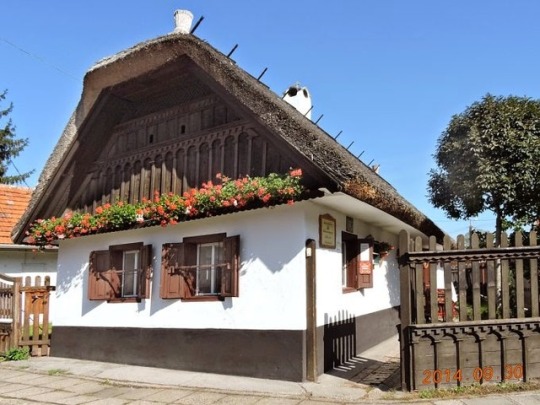

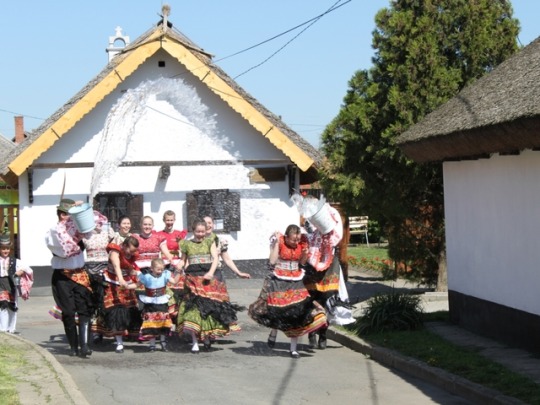

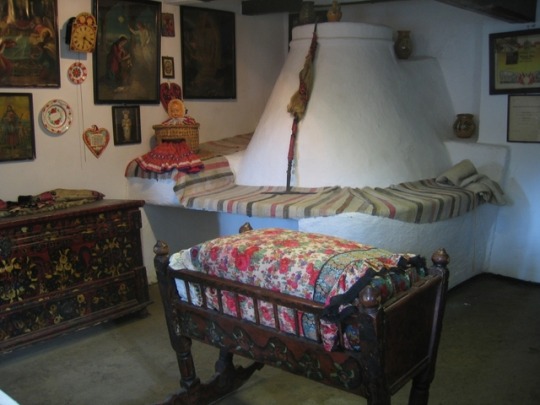
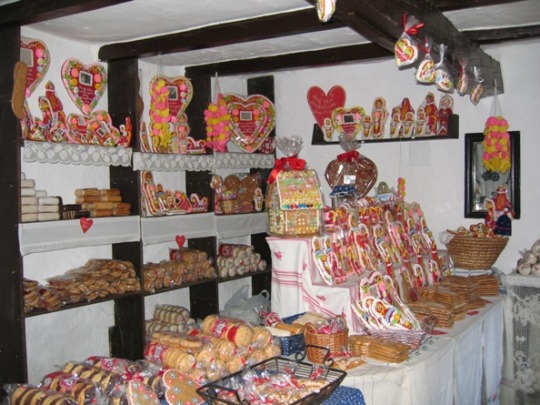

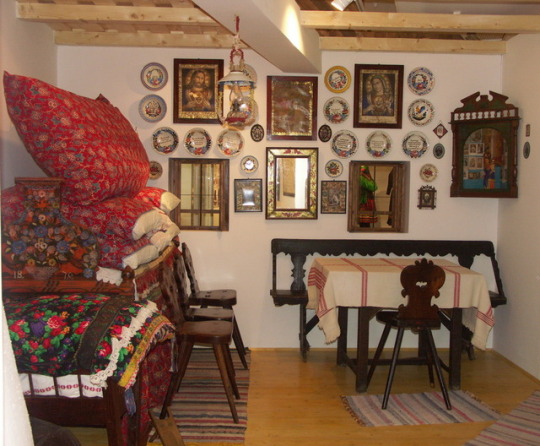
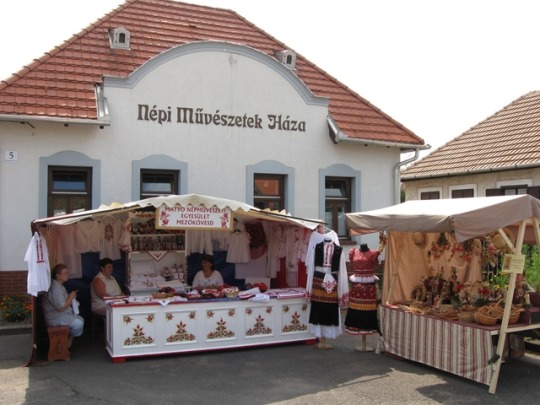

"Matyó culture" is on the nomination list of UNESCO World Heritage. In the south, at the edge of the Alföld, live the most colorfully dressed Hungarian ethnographic group, the Matyós. Matyó people's name can be traced back to King Matthias, who in the 15th century raised Mezőkövesd to the status of regional town. The colorfully embroidered flowers, based on old patterns, with which the women adorn their blouses, fabrics and aprons - red on a white or black ground being particularly popular - produce some of the most beautiful articles in Hungarian folklore. Matyó folk embroidery, originating in Mezökövesd, is popular both within Hungary and abroad. Shawls, tablecloths and aprons of black material are thickly embroidered with a dense accumulation of multicolored flowers in rich Oriental colors which harmonize despite their gaudiness. According to legend, there is a symbolism in the colors used in Matyo decorative work: black represents the soil from which life springs, red is the color of summer – representing light and joy – and blue stands for grief and death. Matyó embroidery decorates men’s wear, too, providing men with coats, vests and shirts more ornate than anywhere else in the country. Over the richly ornamented dresses, women wear a cone-like head wear; the men, high hats. The long skirts of women are made of noble materials, such as cashmere, silk and satin. They are tight at the waist and bell shaped at the ankle. The collar, chest and the bottom of the baggy sleeve of shirts for men are embroidered in a wide strip. The clothing of men and women is supplemented with long aprons. On the long felt cloak of the shepherds, flower patterns are dominant.
9 notes
·
View notes
Text
Possibly one of the most fascinating, recognizable and most iconic traditional dresses in the world is the Huipil Grande, from Istmo of Tehauntepec, Mexico.
Made famous to foreigners due its appearance in two of Frida Kahlo’s paintings, Self–Portrait as a Tehuana (Diego on My Mind), 1943, and Self-Portrait, 1948, and made famous to nationals due to the matriarchy society, the Istmos of Tehuantepec, from where it originates, this garment can not help but captivate the attention of everyone in its eyeshot. From head to toe, like the women who wear it, it is a force of fashion embedded with a strong cultural identity that demands respect and is not to be reckoned with.
Huipil grande of the Istmo de Tehuntepec worn in the Toca style, which is still worn today when entering churches during religious festivals.
Standing shy of a meter in height the Huipil Grande is headdress made from a combination of pleated and starched white lace, commercial lace and satin ribbon. Unlike a traditional huipil, that’s construction is made from a rectangular piece of fabric which has been folded at the shoulders, the Hupil Grande’s construction is based on that of woman’s blouse, only with non-functioning sleeves. Essentially it is one accessory worn two ways, the Huipil Grande Toca and the Huipil Grande Traje de Gala. The Huipil Grande Toca is the style that hugs the face line, this style is used during traditional Tehuana religious events when the wearer must enter a church. The Huipil Grande Traje de Gala is the style that fans out over the top of the head and behind the back creating a sunray effect, this style is used for civil festivals and civil wedding ceremonies. The huipil grande is also known as “Resplandor” meaning “Radiate” in Spanish.
The Huipil Grande is worn with the traditional Tehuana Gala dress, which is an outfit consisting of a large A-line skirt that has been hemmed with white starched and pleated lace, and a traditional rectangle shaped huipil. Both garments are made from matching fabric, typically commercial satin or velvet and embroidered with flowers by hand that graduate in colour.
Suggested Further Reading
THE TEHUANA & THEIR SHOWSTOPPING TRADITIONAL DRESS or MEXICAN EMBROIDERY TECHNIQUES FROM THE ITSMO OF TEHUANTEPEC.
The word Toca in Spanish means touch. The Huipil Grande worn in this way literally touches and hugs the face, whilst covering the breasts of the wearer, who prior to the colonization only worn wrap skirts. Tehuana women were required to cover their breasts if they wanted to enter a church.
From the back of the Huipil Grande Toca, we can see the false sleeve hang from the top of the head.
A few theories follow as to how the Huipil Grande came into fashion.
In 1524 the Spanish conquistador Pedro de Alavarado and his troops arrived in Tehuantepec. It wasn’t long before Catholicism was enforced and churches were erected. Native women who only worn wrap skirts until that time were strictly instructed cover their exposed breasts before entering gods house.
One theory tells the tale of how a ship from Europe sunk off the coast of Tehuantepec and a cargo of white lace blouses washed up on shore. No knowing what they were the women put them on over their heads incorrectly, but the trend stuck. A similar theory according to Fernando Sanchez Marquez in the book, Oaxaca Stories in Cloth, by Eric Mindling, reads,
“One Sunday a indigenous women went to mass wearing her long skirt but was otherwise bare breasted. The priest stopped her at the door. “You cannot enter the church like that!” he said. He somehow acquired a girls Sunday dress. “Cover yourself up with this, and then you can come to church.” And she did. And it caught on.”
Until the opening of the Panama Canal in 1914, Salina Cruz (only 17 km away from the town of Tehuantepec) was one of the major seaports in Mexico. Sailors, traders and diplomats from that sailed from Europe to Asian and then across the Pacific coast to Mexico brought with them fabrics, fashions and sewing materials from almost all corners of the world. Due to its strategic location, the Istmo of Tehuantepec became a confluence of cultures. According to Historian and Author Mario Mercott Francissco,
“Spanish, French, English, Polish, Italian, American and Chinese families lived in the Istmo around by the mid 19th century. Tehuana women were very good at taking inspiration from the various cultural fashions that came to Tehuantepec and making it their own. The flowers on the dresses were inspired by the Manilla Shawl from the Phillipines, the white lace ruffles from Elizabethan collars worn by the Spanish conquistadors, and the silk threads they did their embroidery with most likely came from China or Vietnam.”
Francissco shows us a variety of illustrations made by the Italian lithographer Claudio Linati (1 February 1790 – 11 December 1832) who arrived in the Istmo in 1826 and documented the traditional attire of the natives for the first time ever on record. His illustrations show a rebozo style garment hemmed with lace but no sleeves. Francissco believes that the sleeve was added much later purely for aesthetical reasons to help finish the corners of the rectangular fabric that would have otherwise been protruding out.
Evolution of the Tehuana dress
Illustration by artist and ethnographer Miguel Covarrubias
Prints made by lithographer Claudio Linatia around the mid 1820s show no sleeve down the centre front of the women’s Huipil Grande
Unlike fifty or more years ago the Huipil Grande is no longer worn for attending church on a Sunday. The remarkable accessory can only normally be seen during festivals such as the Guelaguetza, held in Oaxaca city on the last two weeks July, and Paseo de los Estandartes, held in Santo Domingo Tehuantepec on the 5th August. If you are heading to Mexico and love cultural fashion and textiles as much as we do, seeing the spectacular Resplandor worn in all it’s glory is an opportunity not to be missed. Scroll down to find out how you can visit Tehuantepec or why not join Haute Culture on our annual textile tour, MEXICO: FRIDA, FASHIONS, FABRICS & FIESTAS.
Huipil Grande, when worn in the Traje de Gala style, resembles sun beams similar to that of Mexico’s beloved Virgin Guadalupe.
Huipil Grande Traje de Gala requires the women wearing it to stand tall and proud.
The view from the back shows the head opening when worn in the Toca style and the two false sleeves hanging on either side.
Haute Culture would like to say a huge thank you to our translator Fernando Toledo Cruz and historian and author Mario Mercott Francissco for volunteering their time to share the history of the Huipil Grande with us.
Mr Fernando Toledo Cruz and Mr Mario Mercott Francissco
The best way to fly to Mexico
Are you looking for the best flights to Mexico? We recommend searching with Skyscanner.
Click here find the best flight prices to Mexico
Getting to Tehuantepec
The easiest, safest and most popular way to get to Tehuantepec is by taking the ADO bus from either Oaxaca city or San Cristóbal de lass Casas in Chiapas. Click here to check the times and book online.
Where to stay in Tehuantepec
We recommend Hostel Emilia $, Casa Sophia $$ or our personal favourite Hotel Calli $$$.
Don’t forget your travel insurance
I recommend World Nomads insurance for their global, reliable and flexible cover. With 24/7 emergency assistance and 140+ activities covered, you’re in safe hands.
Check out the latest travel insurance prices and details
Suggested further reading
THE TEHUANA & THEIR SHOWSTOPPING TRADITIONAL DRESS or MEXICAN EMBROIDERY FROM THE ISTMO OF TEHUANTEPEC
Are you going to Mexico? Why not pin this post and save it for later?
The Huipil Grande From The Istmo Of Tehuantepec: Mexico’s Most Fascinating Fashion Accessory Possibly one of the most fascinating, recognizable and most iconic traditional dresses in the world is the Huipil Grande, from Istmo of Tehauntepec, Mexico.
0 notes
Photo

Empress Eugénie in one of the early 1860s photographs she commissioned for private use, in which she posed in ethnographic and historic costumes. Albumen print by Pierre-Louis Pierson, painted over in oil and retouched by Marck. Image in the collections of The Metropolitan Museum of Art (there previously titled Empress Eugénie as an Odalisque).
“The image presents Eugénie as a Turkish bride posed on the banks of the Bosphorus [...] In the way this photograph is staged, it shows her wearing authentic Turkish dress and positions her before the site that later captured her imagination throughout her visit [to Constantinople (now Istanbul) in 1869]. Eugénie’s costume includes a skirt and entari, a Turkish blouse made out of embroidered silk, and her silk outer cloak, a feridge, is covered with heavy embroidery, gold cording, and ribbons. Her head is covered with a brimless, red and black tarboosh (or fez) decorated with gilt embroidery. The coins that trim her cap were more common to Albanian than Turkish bridal wear and were given as wedding gifts and passed down through generations. The incongruous addition of pearls and a feather to the cap must have been Eugénie’s own personal touch to the otherwise convincingly construed Turkish costume.
This work, like other travesti photographs, suggests how Eugénie donned costumes that allowed her to transcend the boundaries of her own life and temporarily embodied foreign cultures that fascinated her. [... Her] costume and posture were informed by contemporary stereotypes of Middle Eastern and North African women as exotic and sensual beings. [... By] assuming the alternate subject position of an exotic other, Eugénie frees herself from her own traditional cultural boundaries [a way to process the prejudice and ridicule she was subjected to as a foreigner and an imperial consort of non-royal birth] and grabs herself a rare opportunity to declare and document her sensuality.” Empress Eugénie and the Arts: Politics and Visual Culture in the Nineteenth Century by Alison McQueen, 2011, p.134.
#1860s#second empire#france#empress eugénie#19th century art#turkey#orientalism#portrait#eastern mediterranean#queued
0 notes